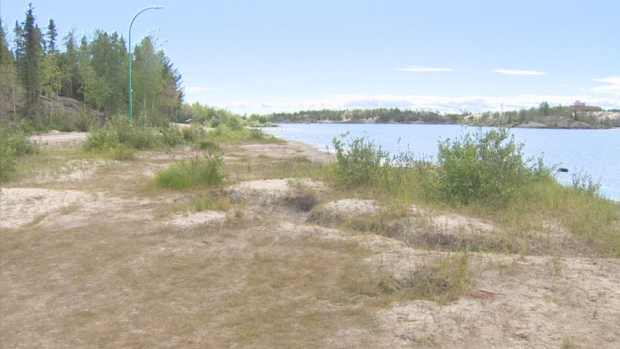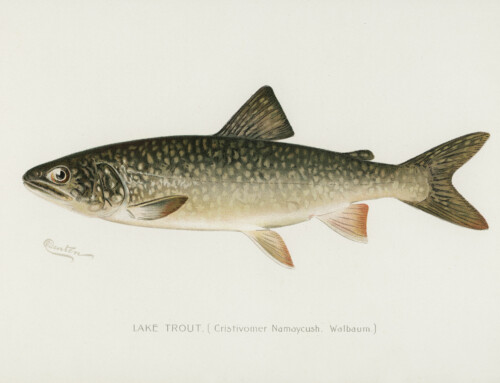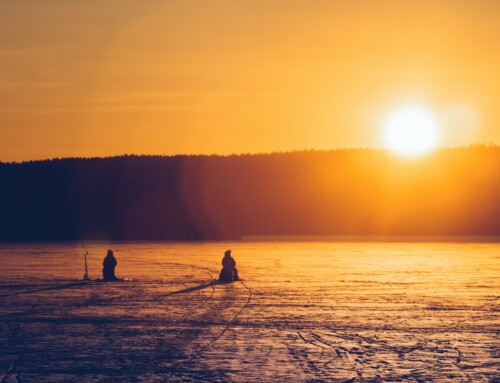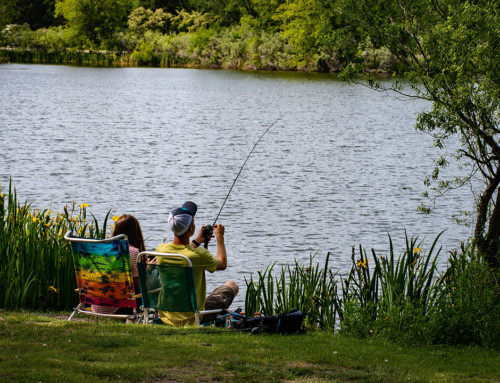Originally Published by CBC News, July 13, 2015
‘A bunch of rotting stuff in that lake’ needs removal for long-term rehabilitation, says Tides Canada rep
Researchers are investigating how to rehabilitate Yellowknife’s “dead” Frame Lake to support fish life and make it attractive for swimming again.
“It’s always been odd to me, and I think a lot of other people, that there’s a beautiful trail around that lake that’s heavily used, and it’s beautiful waterfront that’s right in the middle of the city, but you never see a boat out there, you never see anyone swimming in there, and nobody fishing,” says Steve Ellis, the Northern Canada program leader for Tides Canada.
“It’s kind of a dead lake.”
Tides Canada is working with the Government of the Northwest Territories, the City of Yellowknife and the Yellowknives Dene First Nation on the Frame Lake Rehabilitation Project.
In the past, Yellowknifers used to swim in the lake but Peter Cott, a biologist with the N.W.T. Department of Environment and Natural Resources, says one of the reasons people cite for avoiding the water now is that there are too many leeches.
“One of the reasons there’s probably a lot of leeches in the lake is because there’s not a lot of other life the lake can support,” he said.
“It’s a healthy-looking lake when you look at it, but when you actually investigate it, it’s not.”
Oxygen levels in the lake during the winter drop to levels too low for fish to survive, and only organisms such as leeches and beetles are able to cope, he said.
The 70-hectare lake is about 6.5 metres deep. Cott says other lakes of similar size and depth in the area don’t have such low oxygen levels.
“It’s unusual that the oxygen levels go this low in the winter so we are looking at trying to find out the reasons why and we think it’s because of this sediment layer.”
Researchers found a thick layer of sediment that measures up to a half-metre in thickness in some areas.
Cott says core samples show the sediment started started to build up in the 1930s, around the time the city began to develop around the lake. The samples also support some of the stories the researchers have heard about sewage and tailings being dumped in the lake.
The “Band-Aid fix” to get more oxygen in the lake would be to put in aerators, says Ellis.
“That would essentially force air into the water column but that would require some open water area so there might be a safety issue and that’s not getting at the root of the problem which is there is a bunch of rotting stuff in that lake that’s using up all the oxygen,” he said.
“The long-term solution would be to pull all that stuff out of the lake and dredge it out.”
The first step in rehabilitating the lake is the science, Ellis said, but community outreach and education is also essential.
On Saturday, volunteers took part in a near-shore clean-up that hauled copious amounts of junk people have been dumping in the lake, including shopping carts, bicycles and vehicle tires. Community workshops are coming up in later in the year to discuss the work being done and options for rehabilitation.
Photo courtesy of CBC.







